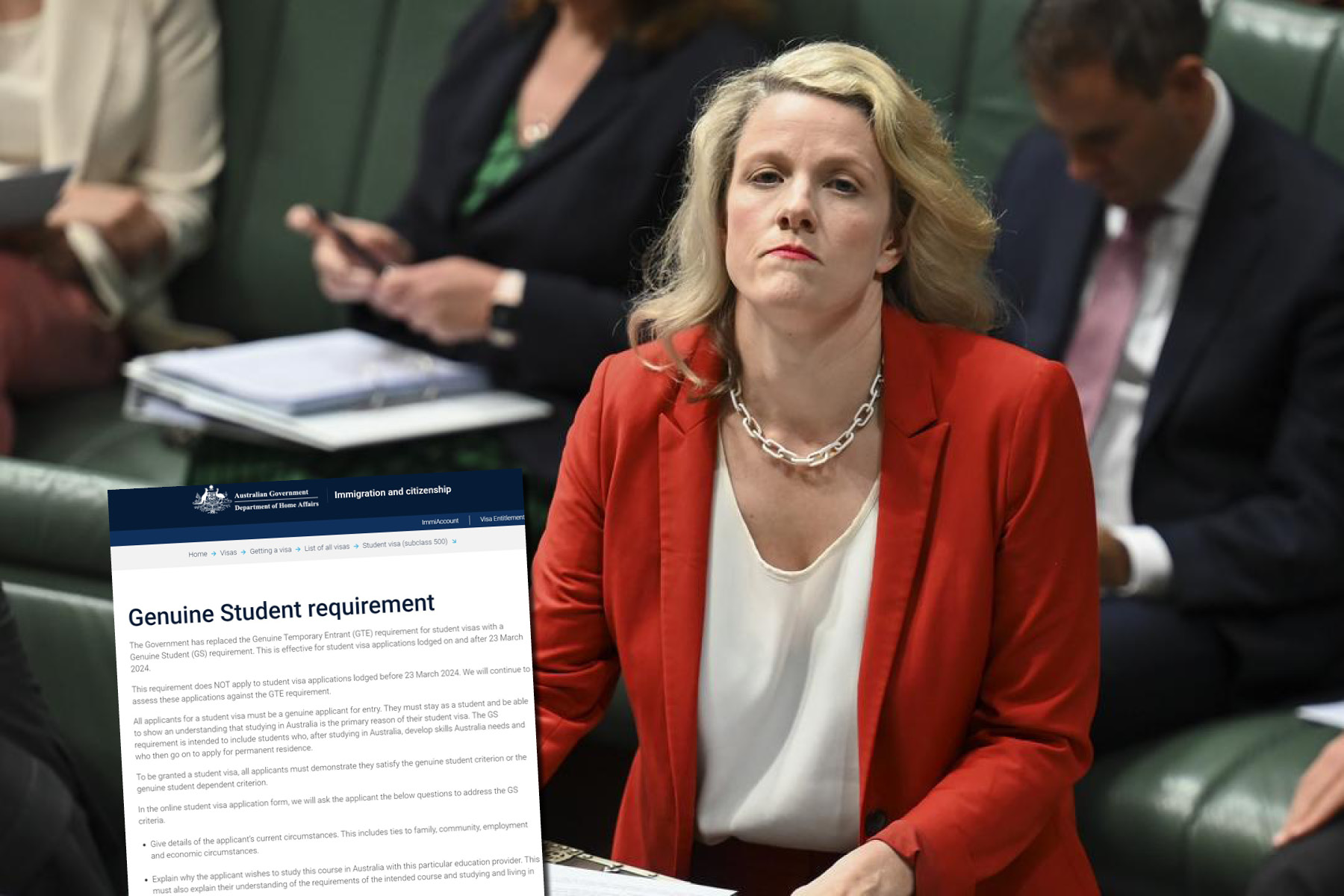Australian universities are placing extra restrictions and rejecting student visas from India and Nepal as the federal government’s push to lower international students numbers continues to put pressure on the tertiary sector.
The government’s plan aims to reduce migration from a record of 510,000 between June 2022 and June 2023 to a target of 250,000 a year until June 2025. Reducing the number of international students is key to delivering that market.
The government’s reforms introduced a three-tier system for determining if universities were admitting students who did not meet the government’s new genuine student test. Those students, the government argues, have been using the student visa as a back door to enter the job market and do not intend to complete their degrees. Universities who receive a higher level (level 2 or 3) have to go through a more complex process to secure visas for their students.
Visa approvals have reached a record low of 78.4% in the 12 months to March and ten universities have been moved to a higher risk level in the latest update to the evidence levels. Western Sydney University’s risk level has been raised from 1 to 2 and the University of New England level has increased from 2 to 3.
To protect their status, multiple universities have written to their education agents advising new restrictions for visa applications after March 24.
Adelaide University wrote to agents that Indian students who had previously had a visa refused from Australia, Canada, Ireland, New Zealand or the United Kingdom would no longer be accepted. New restrictions also apply to students over the age of 20 who do not have credits from previous study.
Central Queensland University has banned all Indian and Nepalese students over the age of 25.
A University of Sydney spokesperson, which has maintained its low-risk rating, told Honi Soit it has not cancelled any student visas because of the heightened standards. The new genuine student test now appears on the University’s admission website for applicants to see.
When asked if the University has updated their eligibility requirements, the spokesperson said that they have remained unchanged and apply equally to people from all countries.
“We don’t differentiate between students from different countries, and our guidance about our own eligibility requirements and admissions processes remains the same for our prospective students and authorised education agents,” the spokesperson said.
The University confirmed, however, that large numbers of students have deferred or withdrawn their applications because the processing of many visa’s is substantially delayed.
“Some students had enrolled without a visa in place which led to a small number of suspensions to ensure the students could meet the requirements of their student visa,” the spokesperson said.
The University has pushed back the last date to apply for Semester 2 2024, so students have more time to get a visa under the new restrictions.
Despite the tightened scrutiny, international students enrolments at the University of Sydney have moderately increased this year compared to 2023. Some education agents Honi spoke to argued that students would now choose universities with a lower risk rating to increase their chances of getting a visa.
University of New England Vice Chancellor Professor Chris Moran said that “The changes to visa assessment have a disproportionate impact on smaller universities.”
A spokesperson for the Department of Home Affairs declined to comment or answer questions about the impacts of these changes on specific groups of students.





